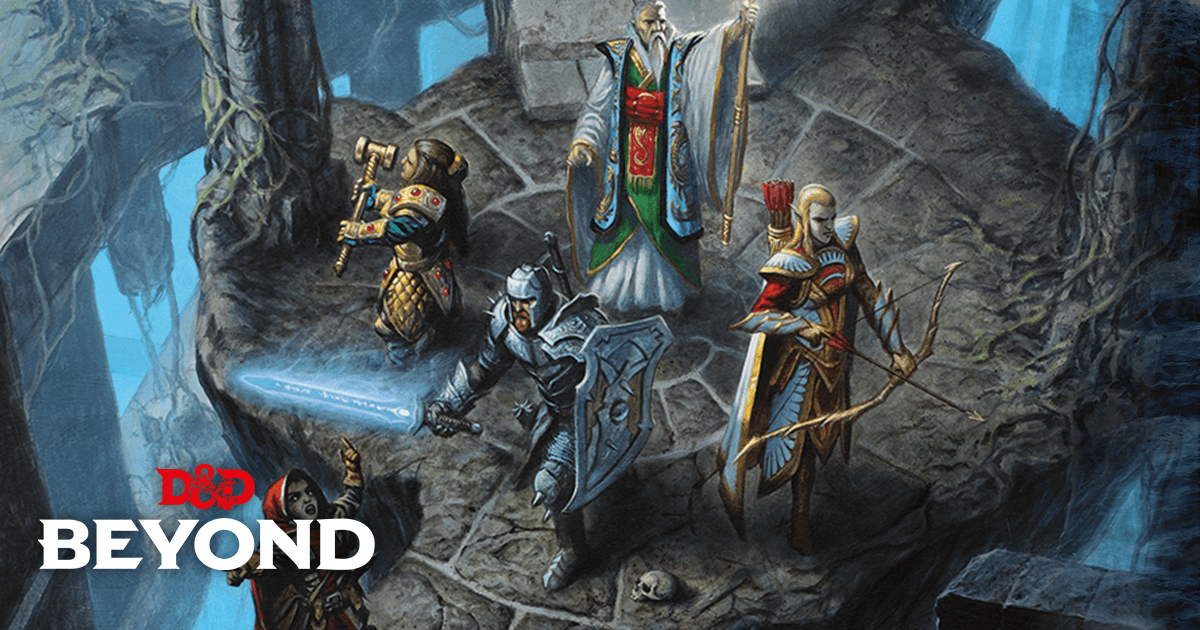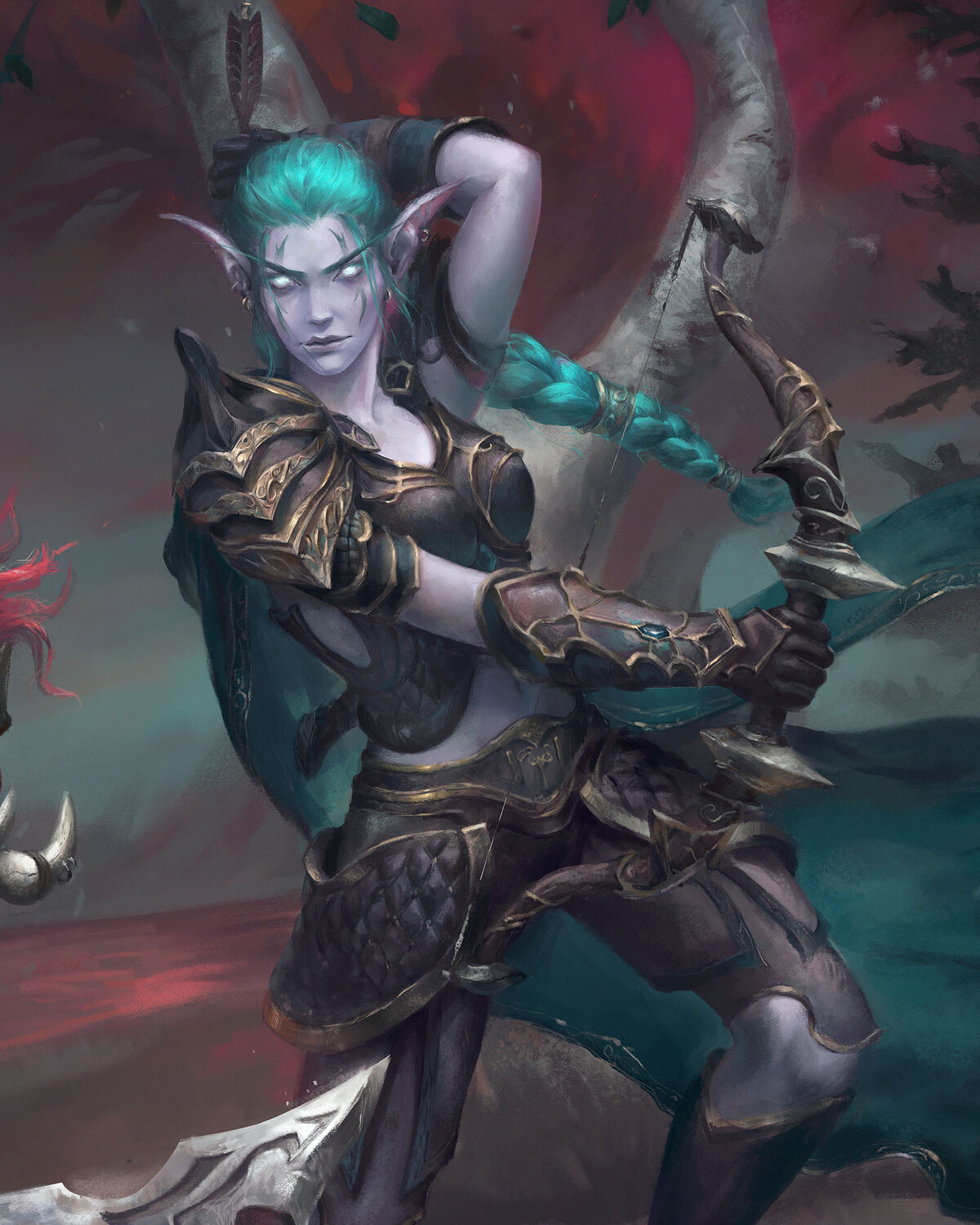Aldarion
Neoreactionary Monarchist

Why Fantasy Elves Are Great Archers
To start with: most fantasy elves are based on Tolkien’s elves. But Tolkien’s elves were not just great archers. They were great everything, and during the Great War against Morgoth, we…
 militaryfantasy.home.blog
militaryfantasy.home.blog
To start with: most fantasy elves are based on Tolkien’s elves. But Tolkien’s elves were not just great archers. They were great everything, and during the Great War against Morgoth, we see elven spear/pike phalanxes, elven swordsmen, even elven axemen. However, there is a not-wholly-unjustified conception of elves as great archers, and Numenoreans – who take after the elves – also had great cohorts of archers armed with steel bows. So why is that?
First part of the answer is obviously Legolas. He is probably the most famous elf in fantasy, and he himself is an archer: he fights with a bow and daggers, but only uses daggers occasionally. Most of the time, he shoots orcs with arrows, and his greatest feats are all with the bow as well. Testis unus testis nullus applies here well, but nevertheless Legolas has had significant impact on image of the Elves in popular consciousness – just as Gimli and his axe were important in defining the dwarves.
However, it is false to say that Tolkien’s elves in generl are archers. Thematically, there is a split between the elves. Noldor, who are highly industrial, utilize swords heavily, but also use axes and pikes. In Silmarillion, there is hardly any mention of elven archery in large-scale battles: combat is nearly exclusively close-range, and primary weapons are swords and spears. Gil-galad, last High King of the Noldor, was famous for his prowess with a sper: Aeglos was his spear, and was in terms of symbolic importance a counterpart to Elendil’s sword Narsil. He also used a sword: “his sword was long, his lance was keen”; nowhere is bow mentioned.
Nandarin and some Sindarin elves who live in forests, such as those of Mirkwood and Lothlorien, utilize bows and spears heavily: at Battle of Five Armies, Mirkwood elves have 1 000 spearmen and several hundred archers. This makes sense: most common resource in forest is wood, while metal would be limited. Forest is also not conductive to set-peace battles, but it is very good environment for ambushes, which would also serve to increase reliance on bows as a weapon. Overall, it is indeed forest Elves who use bows and arrows as a primary weapon, and both major Elven kingdoms from Lord of the Rings – Lorien and Mirkwood – are forest ones. Noldor, who lived and fought in manner similar to advanced human civilizations such as Numenor, have long passed from power by the time of War for the Ring.
This split is another part of reason for why fantasy elves are mostly archers. Majority of people are only familiar with Lord of the Rings and The Hobbit. Elves using swords and spears mostly appear in The Silmarillion, and are predominantly Noldori. But by the time of the Lord of the Rings, their heyday is long past; it is Silvan elves who dominate. Being primarily woodland dwellers, they are much more likely to use arrows. Galadriel herself says as much: But do not think that only by singing amid the trees, nor even by the slender arrows of elven-bows, is this land of Lothlórien maintained and defended against its Enemy. Galadriel herself is Noldor, but the majority of inhabitants of Lothlorien are Silvan Elves, a subgroup of Nandor, of Telerin descent. They had never completed the Great Journey, and thus never arrived to Valinor and learned the arts of the Valar. Thus they maintained their simple lifestyle and did not rely heavily on advanced metallurgy and metal melee weapons in battle. This is most obvious with Mirkwood elves, who are even said to have suffered heaviest casualties of the Elves in the War against Sauron, due to their lack of armour. But elves of Lorien also rely heavily on bows and arrows. Noldor elves in the Second Age did use traditional Noldorin fighting styles and weapons, but of their kingdoms none survived as a political entity to the War of the Ring: Eregion was destroyed in the Second Age and its survivors formed Rivendell. But while Rivendell was still a military power at around the time of destruction of Angmar, by the time of the War of the Ring over a thousand years later, neither Lindon nor Rivendell could field a military force. Thus readers who are familiar only with the Hobbit and Lord of the Rings are, in truth, only familiar with Silvan way of war – which does indeed rely on bows and arrows.
Why is that is not directly stated. Celtic and Scandinavian folklore called the flint arrowheads that were found in the fields “elf-shot” and associated them with Elves. It is very likely that Tolkien was aware of this. Sidhe and Faerie are also vulnerable to iron, as are many if not all Scandinavian mythological creatures. As Tolkien-style elves may also draw on these even beyond Tolkien’s own inspiration, this would make majority of weapons and armour useless to them. Combined with fae’s nature as tricksters who rely on stealth, as well as relative lack of physical prowess, a lanky archer stereotype is not an illogical conclusion.
Beyond Tolkien and his undeniable influence, there are also thematic reasons for Elven reliance on archery. Elves are often (but not always!) presented as being close to nature, which is an aspect that draws from their Norse origins. This rather sharply limits their weapons options: forging metal requires wood to be turned into wooden coal, which loses 90% of it (5 – 12 tones of wood for 1 ton of charcoal 1), and then coal used to heat metal ore and finally metal itself so it could be forged. Compared to this, outfitting an army with bows and some hundreds of thousands of arrows is a minor expenditure of wood. Further, metal smithing is an industry: and as any other industry, it signifies distancing and alienation from nature. This is seen in Tolkien too, in contrast between industrial Noldor and natural Sindar elves.
Elves are also presented as isolationist. This would then extend to killing from distance, ambushing the enemy before they know what hit them – and missile weapons are very suited for such a role. Bow and arrow are also seen as elegant weapons, despite in reality being far more reliant on brute force than swords or spears.
Bows and other ranged weapons also make sense for elves in that, being immortal, elves have very low population replacement rate. Consequently, they have to minimize casualties – which is done by relying on ranged weapons. But in pre-gunpowder era – and even for a long time in gunpowder era – battles were typically won at close range, with melee weapons. Shields, and later armour, significantly limited the ability of archers to cause casualties. As such, bows only make sense if they are a) used in guerilla-style warfare and b) in circumstances where attacker can ambush and/or evade the enemy. In open field, archers require protection of pikemen. But for woodland-dwelling elves, focus on archery indeed makes sense: cover of trees and shrubbery facilitates hit-and-run attacks. At the same time, such approach maximizes the effect of experience which elves will have accumulated while reducing danger of losing precious and nearly-irreplaceable lives.
Lastly, most elves in fantasy are not derivative of Tolkien, but rather of Dungeons and Dragons. While that setting itself is derivative of Tolkien, it is still a role-playing game. A choice which is better than all others (e.g. Tolkien’s elves, who are no different from humans except being immortal) would destroy game balance. And as dwarves already had “heavy hitting melee fighter” base covered and humans “generalist” base, elves got stuffed, rather roughly, into the “ranger” base.
But idea also has problems. Elves are often presented as ectomorphic – physically weak, relatively fral, but quick and agile. War bows however require significant amount of strength – a trained archer will be physically large and strong. As such, fantasy elves should rely primarily on two-handed melee weapons: swords, spears, pollaxes and similar, with ranged weapons being primarily crossbows, javelins and slings. But there is a widespread idea among fantasy community (most of whom had never handled, let alone studied, medieval weaponry) that melee weapons require massive strength while ranged weapons do not. In reality, melee weapons – especially two-handed ones – rely far more on speed and agility than on strength. Of ranged weapons, bows rely primarily on strength, while slings and javelins rely on agility and leverage. Crossbows rely on strength as well but also have various accessories that allow drawing the crossbow more easily, such as windlass. This would actually make them rather suitable as a weapon for elves, if it weren’t for the fact that crossbows are comparatively highly technological – which then results in them being given to dwarves, who can use bows just fine.
Visual acuity, which is often presented as a reason for elves to use bows, would not help with achieving accuracy. Human eye can see a man-sized shape at over a kilometre, and even when shooting at particular parts of body, ability of archer to hit them is still determined primarily by lack of accuracy in the weapon itself. Neither bow nor arrows could be manufactured with precision required for such long-range shots, even assuming they could magically reach it. And they could not. Even artillery (e.g. Roman ballistae) never shot bolts at such distances, with maximum range being at cca 500 – 600 meters. Handheld bows with military arrows never went beyond 300 meters, and typically were at 100 – 200 meters range, and that only against area targets.
Overall idea of elves as archers in Lord of the Rings actually works: Tolkien’s elves are not physically weaker (or stronger) than humans, and not all elves are archers. Those that are have technological and cultural reasons for being so. But as with so many other ideas from Tolkien’s legendarium, later fantasy authors took the idea and ran with it, without actually understanding how and why it works.



